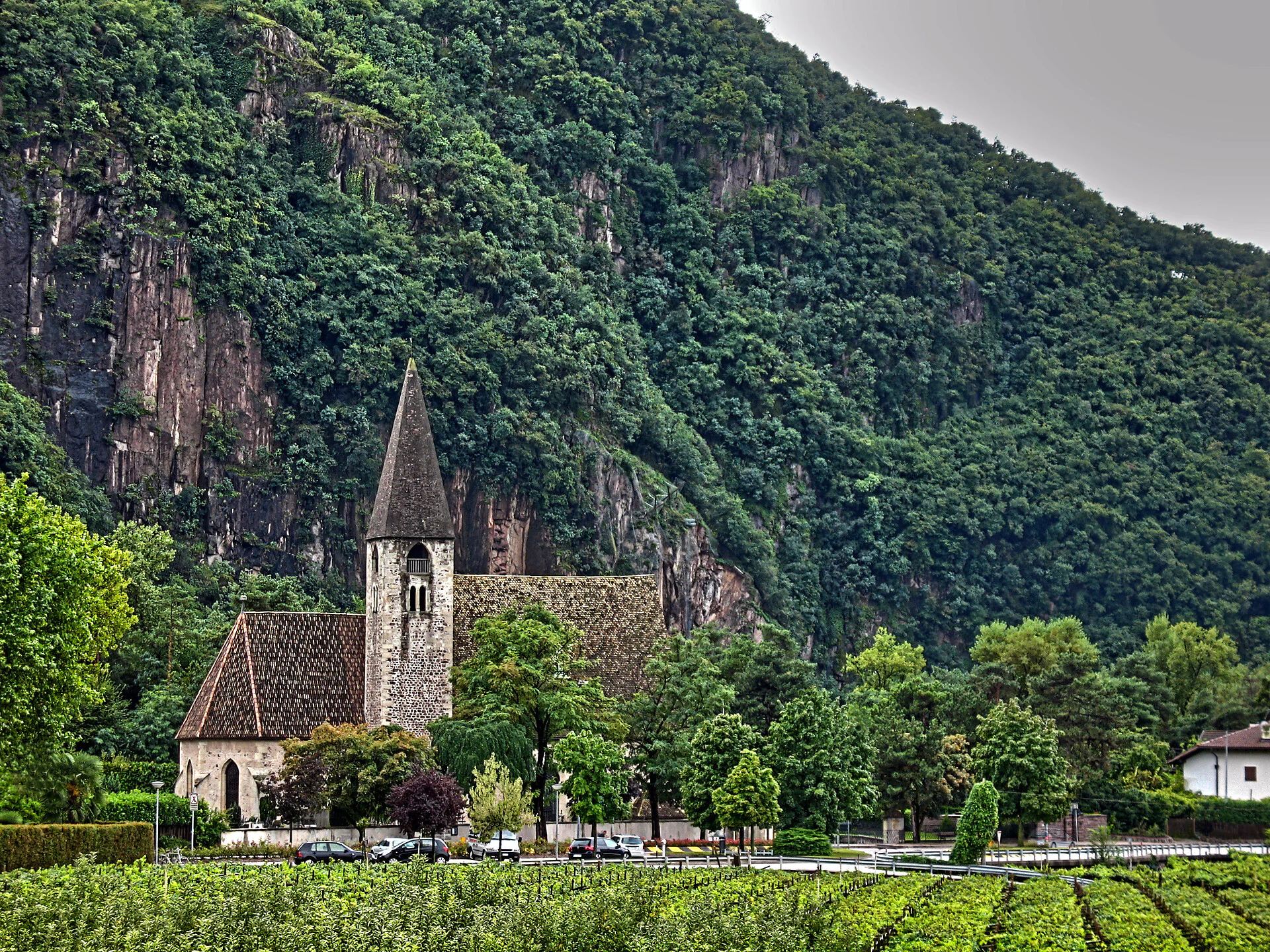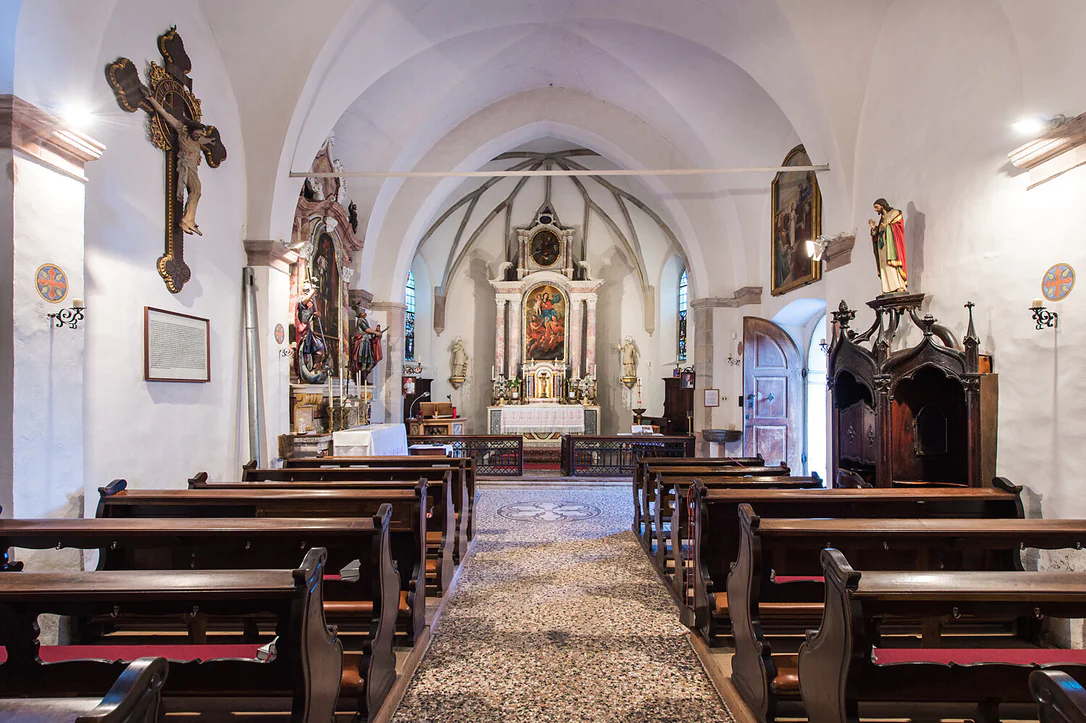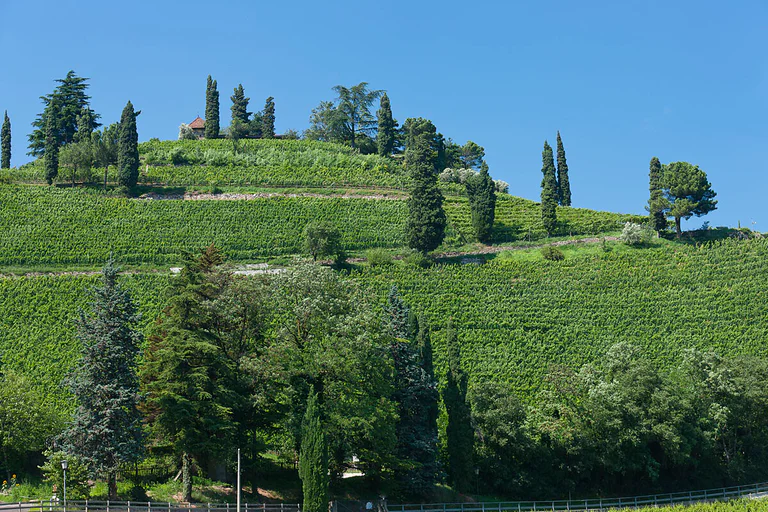-century bell-tower, set deep in the ground owing to flooding by the Schwarzenbach stream, dating back to
a Romanesque predecessor that itself replaced a medieval building. Work on the present-day nave began with the late-Gothic
choir polygon in 1475: the master builder was Peter von Ursel from Tramin. The nave was completed in 1526 under Hans Lutz of
Schussenried. The presbytery façade features sandstone corner blocks, triangular pilaster strips and decorated joints. The three-
bay nave is also divided by triangular pilaster strips. There is a monumental fresco of St. Christopher dating from 1516 on the
western façade. The porch, in Renaissance style, dates back to Pastor Josef a Porta from the year 1604.
Inside the church is an early-Baroque high altar from 1621 with an altarpiece by Theophil Polack. The side altar holds a high
altarpiece by Franz Sebald Unterberger that was once in the former Chapel of St. Barbara at Castelfeder. Of rarity value are the
iron tabernacle from 1609 and the Schwarzenbach organ from 1599, the oldest in South Tyrol.







































































